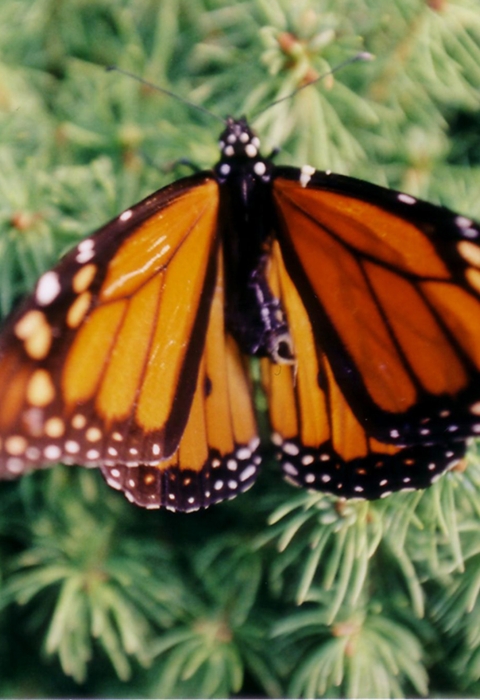Since interning with New Jersey Audubon’s Monarch Monitoring Project in 1999, R4 Biologist Meg Hedeen returns to Cape May, NJ each the fall to study monarch migration. This year, Cellular Tracking Technologies, in collaboration with the Cape May Point Science Center, has deployed solar-powered tags that operate on the Bluetooth frequency on monarch butterflies for the first time ever.
The transmitters weigh only 0.06g, about the same as a grain of rice! Once the monarch is fitted with a tag using just a dab of eyelash glue, location data can be acquired on any smartphone using a free app called “Project Monarch”. Everyone is encouraged to download the app and see if they can find monarchs on their migration!
Around 6:30PM (EST) on October 2, a monarch that was given the name “Meg” was tagged in the dunes of Cape May Point, NJ along the Delaware Bay. Meg was detected the next morning shortly after 7AM before the sun was even above the horizon. Just after 8AM, Meg appeared to take off across the bay to start the next leg of her migration!
¡Buen viaje, mariposa!






